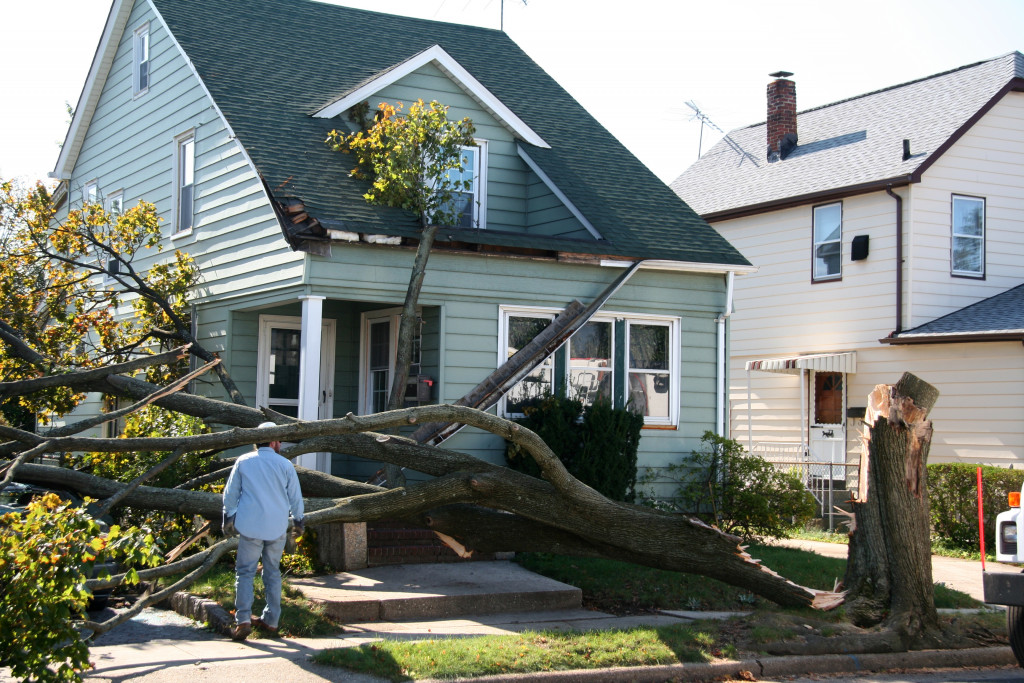In these days of climate change and erratic weather, you might find yourself having to weather several storms in your area. While insurance should be able to help out when the storm damages your home, it would be much better to avoid the hassle altogether. You can do that by either building up your home to be storm-proof or upgrading your current one to be stronger. This can ensure that you are a lot safer when bad weather strikes while also lowering the number of repairs you have to make.
Stronger Windows
One of the more vulnerable parts of your home when a storm hits are the windows. Since they are made of glass, any flying debris could potentially break them. Protecting them when a storm comes should be a high priority. With a broken window, wind and water will come in. This can damage your house and the wind can maybe the start of the roof being ripped off. There are several options for protecting your windows.
First, there are storm shutters. These can be installed right outside your windows and can be opened or closed when necessary. The best type available is the roll-down ones. They are easy to set-up and don’t detract from your current exterior. But they are easy to deploy, and some only need a push of a button.
Second, you should seriously consider getting stronger windows. You can replace your current window frames with aluminum or vinyl ones since they are better against storms than wood. You should also check the Design Pressure rating of any window you buy to see how much air pressure it can handle. The higher it is, the better choice it will be. Finally, you can invest in storm film so that if the window does break, the pieces won’t shatter and there is less of a mess.
Solid Doors
The next place to reinforce in your home is the doors. These are major entrances into your house, and this makes them vulnerable. You need to either replace them or reinforce them. The best material for your various entry doors is fiberglass. They can withstand substantial impacts very well, which should be expected as the storm winds blow debris all over the place. It can also keep out wind if you combine it with good weatherstripping. Your garage door should get a similar treatment. But with it, you have more options. Steel reinforcement and additional hardware will ensure that your door won’t end up flying all over the place.
Finally, you should purchase storm braces and metal storm panels. Store them somewhere and when a storm warning comes, start setting them up on your doors. They are much better than wooden planks for protecting them.
Keeping The Roof On
The weakest part of your house when it comes to storms is the roof. Depending on the type of roof you have, there is a pretty good chance that the strong winds can tear your roof off. This is most likely with gabled roofs since the gables allow the wind to latch on and push upward. If possible, you should invest in roof straps. These are galvanized steel supports that help keep the roof held down against strong winds.
If your roof is old, you should seriously consider replacing it. A newer roof should be able to better handle any storm winds and can stand up better to damage. Metal roofs are best against storms since they are incredibly durable and can handle the punishment.
Safe Rooms
The ultimate addition to any home facing major storms and hurricanes is a safe room. This is a place where you can be sure that you are sheltered from the worst of any storm. Constructing a safe room is pretty simple. A family of four will only require a space of four feet by eight feet. This is a small room, but you are not making this for comfort but safety. You might want to make it larger so that you can accommodate provisions and emergency supplies like a generator and lamps. A good safe room would be at ground level or even in the basement. Reinforced concrete walls with a solid door are its main features. If it is a ground-level structure, then a solid cement top finishes it off. Such a room can be a good investment for maximum safety.

A storm-proof home is completely possible when you build it right. Even older homes can get proper reinforcement and be able to handle a strong storm. However, not anything can be fully storm-proof. Always be aware of how strong a storm your house can handle. If the weather gets so bad that your home is in danger despite all the upgrading, it is better to evacuate and come back later.

